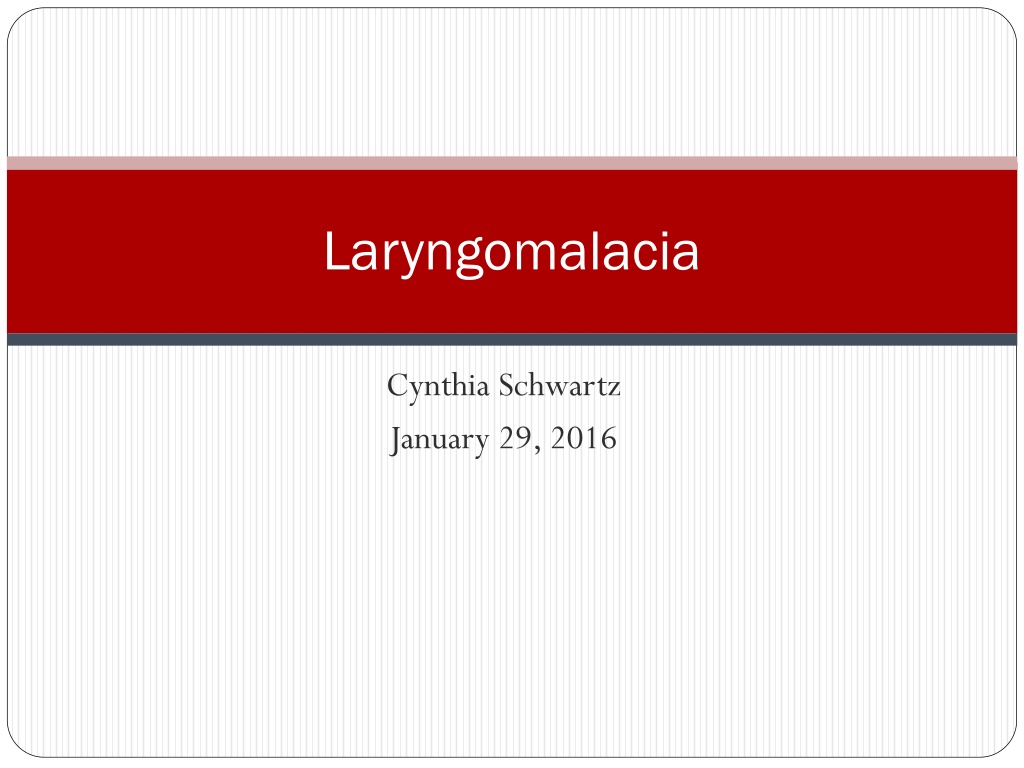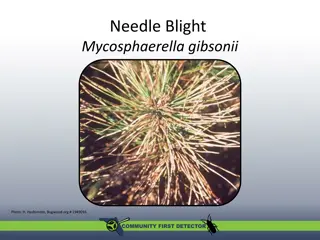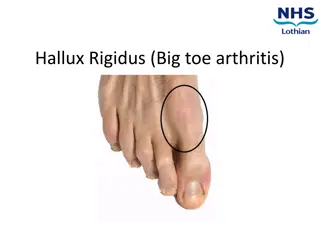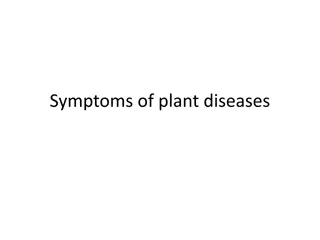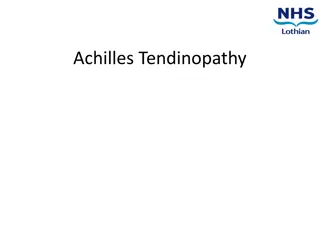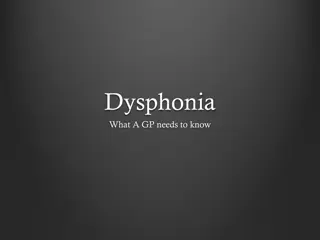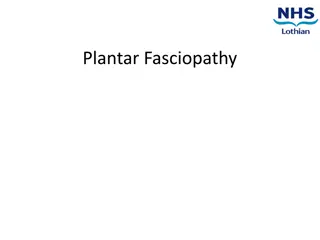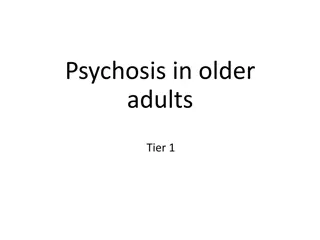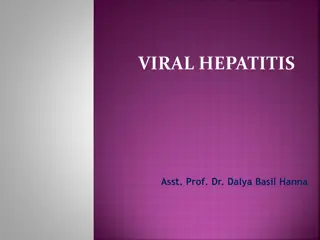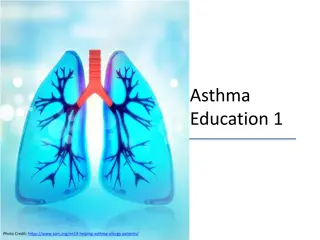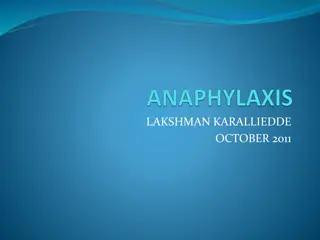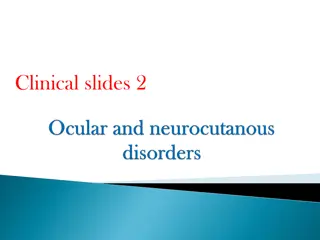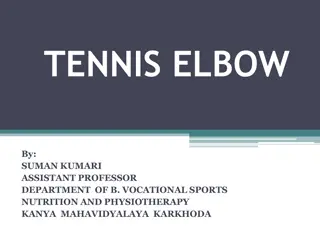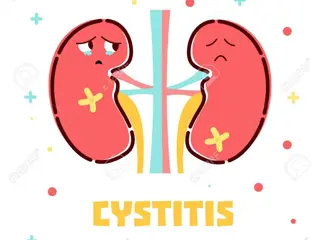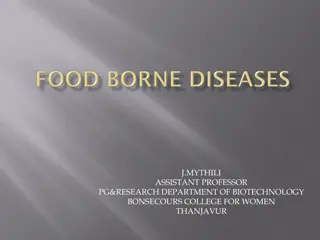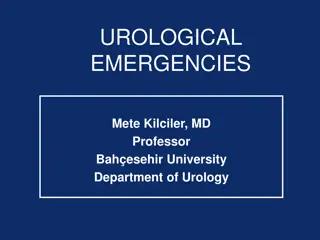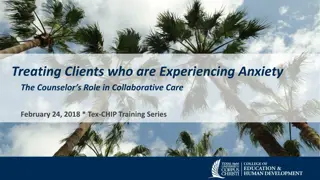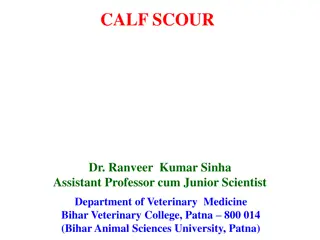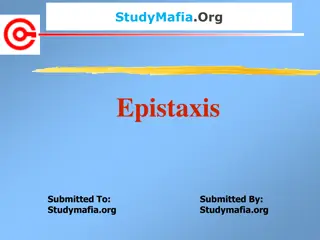Laryngomalacia: Causes, Symptoms, and Management
Laryngomalacia is a condition characterized by the inward collapse of supraglottic structures during inspiration, leading to intermittent airflow obstruction. It is a common cause of neonatal and childhood stridor, with symptoms typically appearing within a few weeks after birth. The condition can be exacerbated by various factors such as crying, feeding, agitation, infections, and a supine position. Laryngomalacia can result in respiratory concerns, difficulty feeding, and co-morbidities like gastroesophageal reflux. Additional synchronous airway lesions may also be present in some patients, requiring further diagnostic evaluation.
Download Presentation

Please find below an Image/Link to download the presentation.
The content on the website is provided AS IS for your information and personal use only. It may not be sold, licensed, or shared on other websites without obtaining consent from the author. Download presentation by click this link. If you encounter any issues during the download, it is possible that the publisher has removed the file from their server.
E N D
Presentation Transcript
Laryngomalacia Cynthia Schwartz January 29, 2016
What is laryngomalacia? Inward collapse of supraglottic structures during inspiration Leads to intermittent airflow obstruction Most common cause of neonatal and childhood stridor, account for 60-70% of cases High pitched Not always present at birth, usually apparent within a few weeks Exacerbated by crying, feeding, agitation, infections, and supine position
Mechanism From: https://instructions.kidshealth.org/wp/laryngomalacia-floppy-voice-box- 1404/
Pathophysiology Histologic exams demonstrate normal fibro-elastic cartilage in patients with symptomatic disease Lower aryepiglottic (AE) fold to glottic length ratio in patients with severe laryngomalacia as compared to unaffected children However, some children with lower AE fold to glottic length ratio are asymptomatic Immaturity/abnormal integration of peripheral nerves and/or brainstem nuclei and pathways responsible for swallowing and maintenance of airway patency
Relevance 5-20% have respiratory concerns Obstructive sleep apnea, tachypnea. dyspnea, respiratory distress, hypoxemia About half of all laryngomalacia patients have some difficulty feeding Coughing, cyanotic episodes, regurgitation, emesis, slow feeding Almost all with severe laryngomalacia exhibit the above difficulty feeding and: Recurrent aspiration pneumonia, failure to thrive
Co-Morbidities Most common: gastroesophageal reflux 65%-100% May irritate the mucosa, leading to inflammation and worsening airway collapse Only limited causal evidence pH studies? Acid-blocking medication? Neurologic disease, congenital syndromes and anomalies, and heart disease
Synchronous Airway Lesions (SALs) 12-64% of patients Most commonly tracheomalacia Subglottic stenosis Vocal cord paralysis Additional diagnostic procedures controversial
Diagnosis Pertinent history Gestational age, past endotracheal intubation, congenital or genetic abnormalities, respiratory symptoms, feeding Physical examination Height, weight, respiratory sounds, chest movement http://www.youtube.com/watch?v=AIuA2zKIk2k Flexible fiberoptic laryngoscopy (88%) Done awake Avoid topical anesthetics
Risk Factors Age usually less than 2 years old, sporadic case reports of older children and adults Prematurity is a risk factor for dysphagia after supraglottoplasty Bronx study found no difference in the number of male and female patients Previous studies suggest male predominance Premature African-American and Hispanic infants were at a higher risk of laryngomalacia compared to Caucasian infants Low birth weight was strong predictor of laryngomalacia
Laryngoscopy Progressive airway obstruction on inspiration Omega epiglottis From: http://clinicalgate.com/congenital-disorders-of-the-larynx/
Treatment Symptoms are most severe at 4-8 months of age and generally become less severe Most outgrow by two years old Only 5-20% need surgery
Surgical Indications Respiratory Stridor with respiratory distress Dyspnea with retractions Pectus excavatum Pulmonary hypertension Cor pulmonale Severe obstructive sleep apnea Feeding Episodic cyanosis with feeding Recurrent aspiration pneumonia Failure to thrive
Surgical Treatment Supraglottoplasty Partial epiglottectomy Division of AE folds Removal of redundant mucosa Performed under sedation with spontaneous breathing Use microlaryngeal instruments, such as micro-debrider or CO2 laser 95.7% success rate 8.5% complications rate Epiglottopexy sometimes used for posterior collapse
Post-Supraglottoplasty From: Laryngomalacia: Review and Summary of Current Clinical Practice in 2015, Thorne, Marc C. et al., Paediatric Respiratory Reviews , Volume 0 , Issue 0
After Treatment Catch-up growth may be demonstrated Younger infants catch up more than older Smaller infants catch up more than larger Surgery correlates with improved growth
References https://instructions.kidshealth.org/wp/laryngomalacia-floppy-voice-box-1404/ http://www.youtube.com/watch?v=AIuA2zKIk2k http://clinicalgate.com/congenital-disorders-of-the-larynx/ Laryngomalacia: Review and Summary of Current Clinical Practice in 2015, Thorne, Marc C. et al., Paediatric Respiratory Reviews , Volume 0 , Issue 0 Laryngomalacia: The role of gender and ethnicity, Natalie E. Edmondson, John P. Bent III, Christine Chan, International Journal of Pediatric Otorhinolaryngology, Volume 75, Issue 12, December 2011, Pages 1562 1564 Catch-up growth in infants with laryngomalacia after supraglottoplasty. Czechowicz JA, Chang KW. Int J Pediatr Otorhinolaryngol. 2015 Aug;79(8):1333-6. Supraglottoplasty in premature infants with laryngomalacia: does gestation age at birth influence outcomes? Durvasula VS, Lawson BR, Bower CM, Richter GT. Otolaryngol Head Neck Surg. 2014 Feb;150(2):292-9. Adult-onset laryngomalacia: case reports and review of management. Hey SY, Oozeer NB, Robertson S, MacKenzie K. Eur Arch Otorhinolaryngol. 2014 Dec;271(12):3127-32
